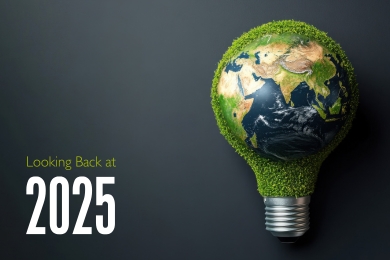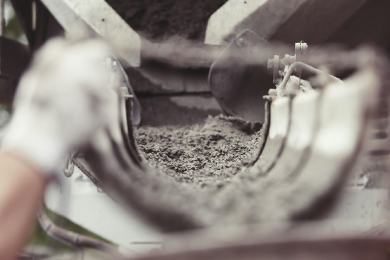There’s nothing quite like expensive energy and power prices to focus people on thriftier (and therefore more sustainable) methods of heating and hot water provision.
And the UK is now seeing a general rise in the installation and use of instantaneous electrical heating, as the country strives to increase energy efficiency in order to meet its net zero emissions targets.
But in many ways, instantaneous electrical heating isn’t any kind of an innovation at all; in fact, it’s been in use for decades, as any household with a separate electric water heater over the kitchen sink will testify.
The question is, can such a retro technology serve the needs of a heating-hungry nation at scale? Can this old-timer put a new slant on sensible energy use? Below, we investigate.
What is instantaneous electrical heating?
First of all, let’s define our terms. Instantaneous electrical heating is a method of heating water, either for hot water use or for space heating that doesn’t require a storage tank (in fact, it’s often referred to as being ‘tankless’.)
The heat is on-demand; as you switch the heating or hot water control on, or activate it by increasing a thermostat setting, the water flows over heating elements and becomes instantly hot as it travels. You heat only the water you need, every time; there is little or no waste at the point of consumption.
Over-sink water heaters, as we describe above, are an example of an instantaneous electrical heating device, as are electric showers, but entire central heating solutions can also be based on this method.
For hot water use particularly, instantaneous electrical heating is considerably more efficient than a hot water storage tank, as you aren’t heating water you haven’t used yet (and might not).
With electric showers, there’s a double dose of efficiency, as they also tend to use less water than mixer showers. Less water, less heating needed, less power consumed, lower emissions, lower bills!
More benefits of tankless systems
Cheaper upfront cost– Compared to gas-fired heating and hot water systems or heat pumps, for example, tankless electrical systems tend to be cheaper to buy and install.
No wasteful heat loss- Because instantaneous electrical heating methods use no tank, they don’t suffer standby heat loss, like tanks do. With a tank, you effectively lose some of the heat you’ve paid for over time, which is wasteful and inefficient.
Compact and space-saving - Tankless heating and hot water solutions also tend to be far more compact than tank-based systems. There isn’t the physical bulk of the tank, for starters, but also the heating unit isn’t heating up huge quantities of water for storage – just the on-demand flow that passes through it – so it doesn’t need to be anywhere near as big, and can fit easily into much tighter spaces.
Always ready with heat - Tankless solutions pretty much do away with the risk of the hot water running out. As long as there is electricity, all the water drawn or circulating will be constantly hot, within the device’s flow limits.
Low-maintenance -Instantaneous electrical heating solutions tend to require less maintenance than storage systems, as there are fewer components that can leak or corrode.
Some disadvantages of instantaneous electrical heating
May require a power upgrade – For all that instantaneous electrical heating is efficient and thrifty, thanks to its on-demand nature, the power required to instantly heat heavy flows of water is significant, and properties with older electrical systems may require an upgrade to wiring and circuit breakers.
The flow rate paradox – With instantaneous electrical heating, the heat transmitted to the water depends on how quickly the water passes over the heating element. A slower rate of flow for the same amount of heating energy will produce hotter water in a single flow.
But when many people are drawing hot water at once, this can lead to an insufficiency of heat, as the pump ramps up to meet demand and the water spends less time in contact with the heat source. Alternatively, if the pump doesn’t perform, everybody may end up with a scalding dribble!
Contested efficiency – While instantaneous electric heating and hot water systems, including panel heaters, consume electricity only when needed, their efficiency is inherently limited. These systems operate at a 1:1 ratio of electricity input to heat output. In contrast, air source heat pumps typically deliver around 4 units of heat for every unit of electricity consumed, making them up to four times more efficient.
As a result, using direct electric heating can cost nearly four times more than a heat pump, depending on your electricity and gas rates.Even with losses in efficiency, gas heating may still be cheaper due to the significantly lower unit cost of gas compared to electricity.
And this is where efficiency calculations get complex, as you try to balance savings in the frequency of heat use with the power-to-heat relationship, and the influence of other factors like insulation andPV. For example, a well-timed use of PV power in the afternoon could heat your water tank at little to no cost, further shifting the balance in favour of electric systems.
Old solution, new lease of life?
On the face of it, instantaneous electrical heating certainly makes sense. You only use the electricity you need at that moment, and you’re not consuming budget and carbon heating up vast volumes of stored water that lose heat over time anyway.
But there are environmental shortcomings with tankless heating and hot water systems, and they’re not necessarily down to internal energy efficiency issues. Rather, they’re todo with varying environmental impacts based on the carbon emissions of the electricity supply used.
Higher-emissions power production will essentially wipe out some of the sustainability benefit delivered by the system’s more energy-efficient operation.
Electricity from renewables, on the other hand, will enhance the effect of the latter. And with each kilowatt-hour (kWh) of electricity production averaging207 grams of carbon dioxide emissions in the UK, according to Government figures, mass uptake of instantaneous electrical heating is not without its downside.
But will mass uptake ever be likely anyway, given that the continuing cheapness of gas compared to electricity consistently condemns us to ignore the energy efficiency wisdom of the past?





.png)




